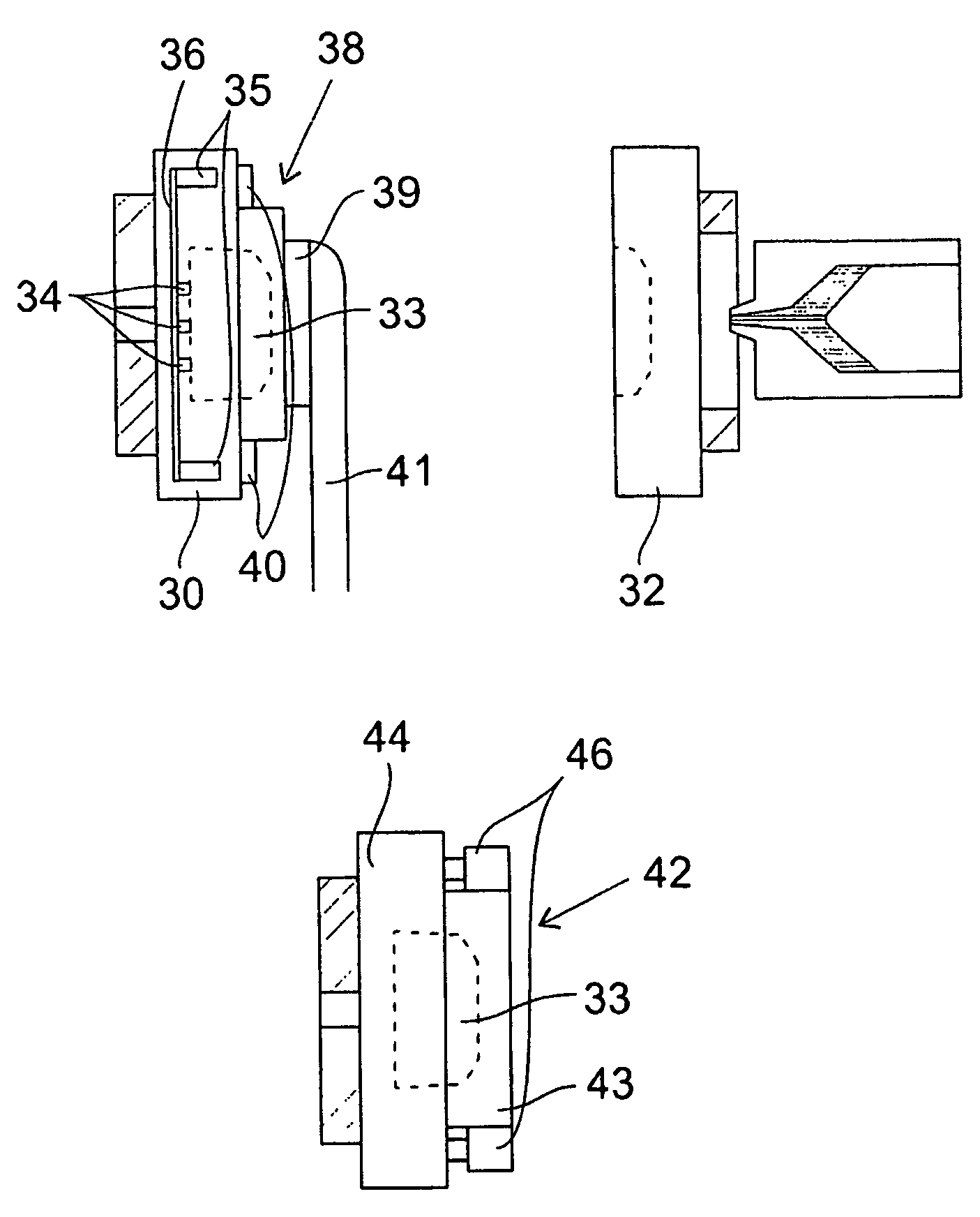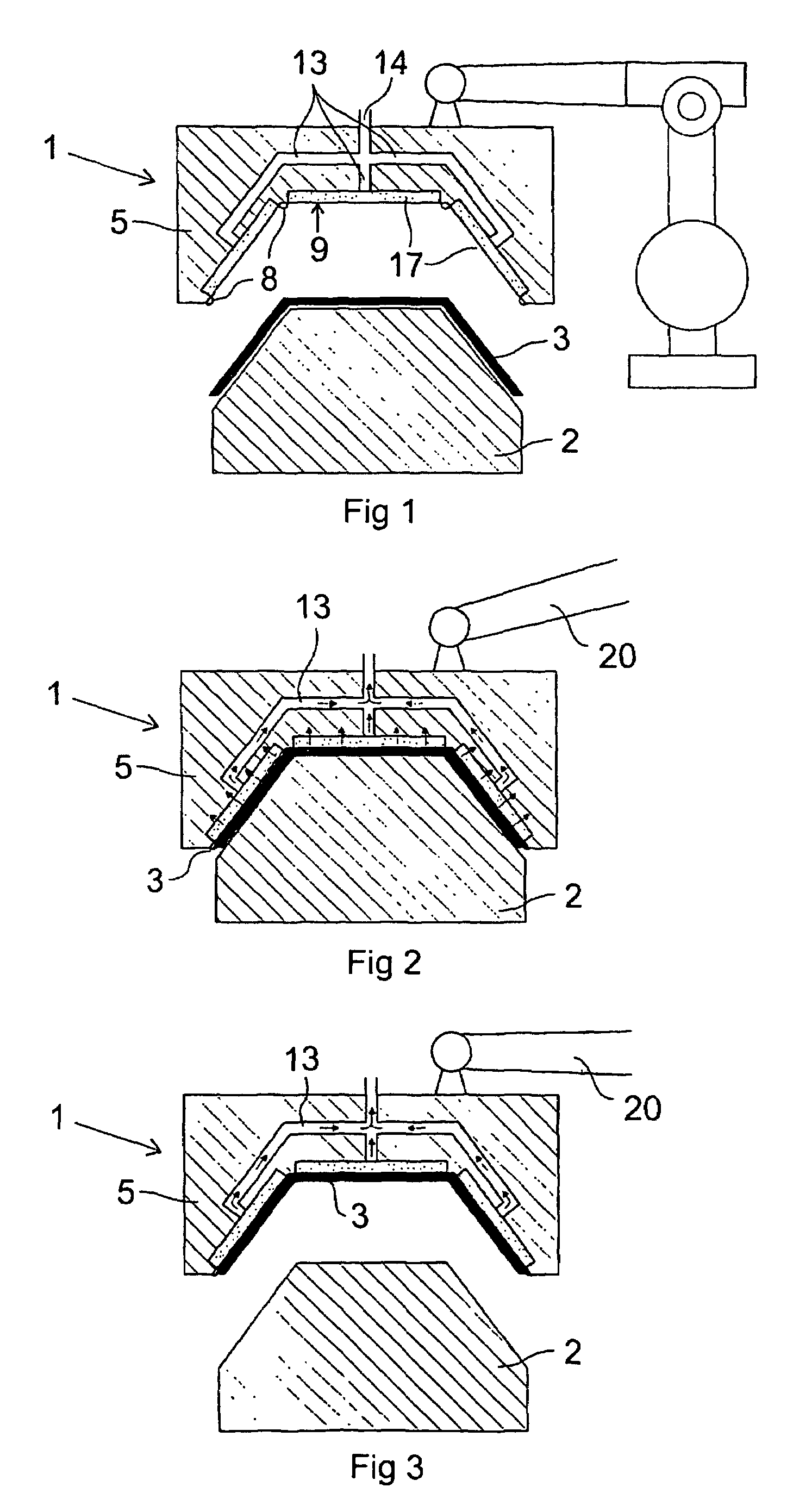Device and a method for removing an object from a moulding tool
a technology of a device and a tool, which is applied in the direction of dough shaping, manufacturing tools, applications, etc., can solve problems such as the risk of object deformation
- Summary
- Abstract
- Description
- Claims
- Application Information
AI Technical Summary
Benefits of technology
Problems solved by technology
Method used
Image
Examples
Embodiment Construction
[0026]The FIGS. 1-3 show a device 1 according to the invention applied in a vacuum-moulding machine. The device 1 is arranged for removing an object from a moulding tool and then to transport the object away from the moulding tool without deforming the object. The vacuum-moulding machine comprises a moulding tool 2 having a surface, the shape of which determines the shape of the object to be mould. The source material to be mould is usually a sheet of a suitable plastic. The sheet is heated during the vacuum-moulding process so that it becomes soft and formable. When the sheet has reached the right temperature, a relative movement between the sheet and the moulding tool 2 occurs so that they get in contact with each other. Thereafter, the sheet is sucked towards the forming tool by means of under-pressure, so that the sheet is shaped after the surface of the moulding tool and the object 3 is formed. Cooling is performed in the moulding tool until the object becomes substantially for...
PUM
| Property | Measurement | Unit |
|---|---|---|
| size | aaaaa | aaaaa |
| height | aaaaa | aaaaa |
| traction force | aaaaa | aaaaa |
Abstract
Description
Claims
Application Information
 Login to View More
Login to View More - R&D
- Intellectual Property
- Life Sciences
- Materials
- Tech Scout
- Unparalleled Data Quality
- Higher Quality Content
- 60% Fewer Hallucinations
Browse by: Latest US Patents, China's latest patents, Technical Efficacy Thesaurus, Application Domain, Technology Topic, Popular Technical Reports.
© 2025 PatSnap. All rights reserved.Legal|Privacy policy|Modern Slavery Act Transparency Statement|Sitemap|About US| Contact US: help@patsnap.com



